
Pope Shenouda III was the 117th Pope of Alexandria and Patriarch of the See of St. Mark. His papacy lasted 40 years, 4 months, and 4 days, from 14 November 1971 until his death.
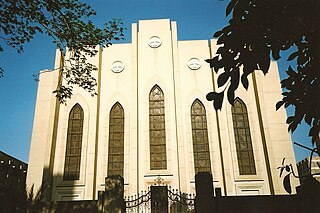
The Coptic Catholic Church is an Eastern Catholic particular Church in full communion with the Catholic Church. Along with the Ethiopian Catholic Church and Eritrean Catholic Church, it belongs to the Alexandrian liturgical tradition. Uniquely among the Alexandrian Rite Eastern Catholic liturgies, the Coptic Catholic Church uses the Coptic Rite and the Coptic language in its liturgy; the Ethiopian Catholic Church and Eritrean Catholic Church use the Ge'ez Rite.
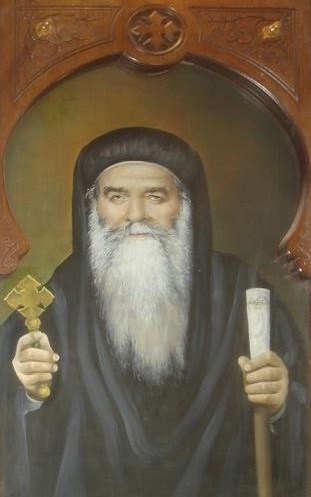
Pope Cyril VI of Alexandria also called Abba Kyrillos VI, Coptic: Ⲡⲁⲡⲁ Ⲁⲃⲃⲁ Ⲕⲩⲣⲓⲗⲗⲟⲥ ⲋ̅ ; was the 116th Pope of Alexandria and Patriarch of the See of St. Mark from 10 May 1959 to his death.
Cyril III, known as Cyril ibn Laqlaq, was the 75th Coptic Pope and Patriarch of Alexandria.
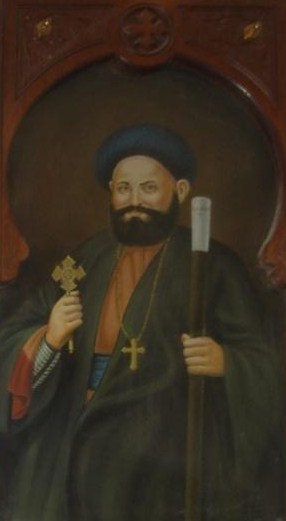
Pope Cyril IV of Alexandria (Abba Kyrillos IV), Coptic: Ⲡⲁⲡⲁ Ⲁⲃⲃⲁ Ⲕⲩⲣⲓⲗⲗⲟⲩ ⲇ̅ 110th Pope of Alexandria & Patriarch of the See of St. Mark. He was born David (Daoud) in 1816. Despite his relatively short papacy, he is regarded as the "Father of Reform" of the Coptic Orthodox Church in modern times. He is credited for establishing a great printing house and printing many Church books.

St. Mark's Coptic Orthodox Cathedral is a Coptic church located in the Abbassia District in Cairo, Egypt. The cathedral is the Seat of the Coptic Orthodox Pope. It was built during the time when Pope Cyril VI of Alexandria was Pope of the Coptic Orthodox Church, and was consecrated on 25 June 1968.

Abram, also known as Abraam or Saint Abram, was a contemporary Coptic Orthodox saint. He was the Bishop of Faiyum and Giza, and was also known as the Friend of the Poor.
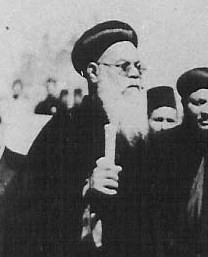
Pope Joseph II of Alexandria (Abba Yousab II) was the 115th Pope of Alexandria & Patriarch of the See of St. Mark.

Paromeos Monastery, also known as Baramos Monastery, is a Coptic Orthodox monastery located in Wadi El Natrun in the Nitrian Desert, Beheira Governorate, Egypt. It is the most northern among the four current monasteries of Scetis, situated around 9 km northeast of the Monastery of Saint Pishoy. Ecclesiastically, the monastery is dedicated to and named after the Virgin Mary.

The Coptic Orthodox Church of Alexandria has several churches in Great Britain and Ireland under the jurisdiction of four diocesan bishops.
Iris Habib Elmasry was a prominent Coptic Historian (1910–1994).
Father Menassa Youhanna (1899–1930) was a Coptic priest, historian and theologian, most noted for his work on the history of the Coptic Orthodox Church of Alexandria.
Matta El Meskeen, born Youssef Iskandar, was a Coptic Orthodox monk. He was the key figure in the revival of Coptic monasticism, a movement which began in 1969 when he was appointed to the Monastery of St Macarius in the Wadi El Natrun in Egypt. By the time of his death the community had grown from 6 aged monks to 130 monks, and as many other monasteries were revived, new ones also began to open. He was twice nominated to become Coptic Pope, but was not chosen in either case.

Coptic history is the part of the history of Egypt that begins with the introduction of Christianity in Egypt in the 1st century AD during the Roman period, and covers the history of the Copts to the present day. Many of the historic items related to Coptic Christianity are on display in many museums around the world and a large number is in the Coptic Museum in Coptic Cairo.
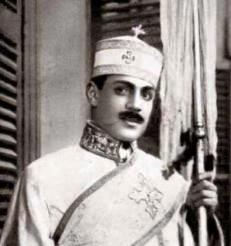
Archdeacon Habib Qozman Mankarious Girgis or simply Saint Habib Girgis, was a modern-day dean of the Catechetical School of Alexandria.
George Habib Bebawi was a Coptic Egyptian-American theologian, Biblical scholar and Patristics scholar.
Basil IV,, was the 20th Metropolitan of the Holy and Great City of Our Lord, Jerusalem, and Archbishop of the Holy and Ancient Archdiocese of Jerusalem, all Palestine and the Near East, from 1959, until his death in 1991.
The Sunday School Movement is a catechetical movement within the Coptic Orthodox Church. It was founded in the early 20th century, in an effort to spread Oriental Orthodox theological education among the laity of the Coptic Orthodox Church, combating foreign missionary efforts orchestrated in 19th century Egypt by the Roman Catholic Church, the Church of England, and numerous American-protestant movements.











